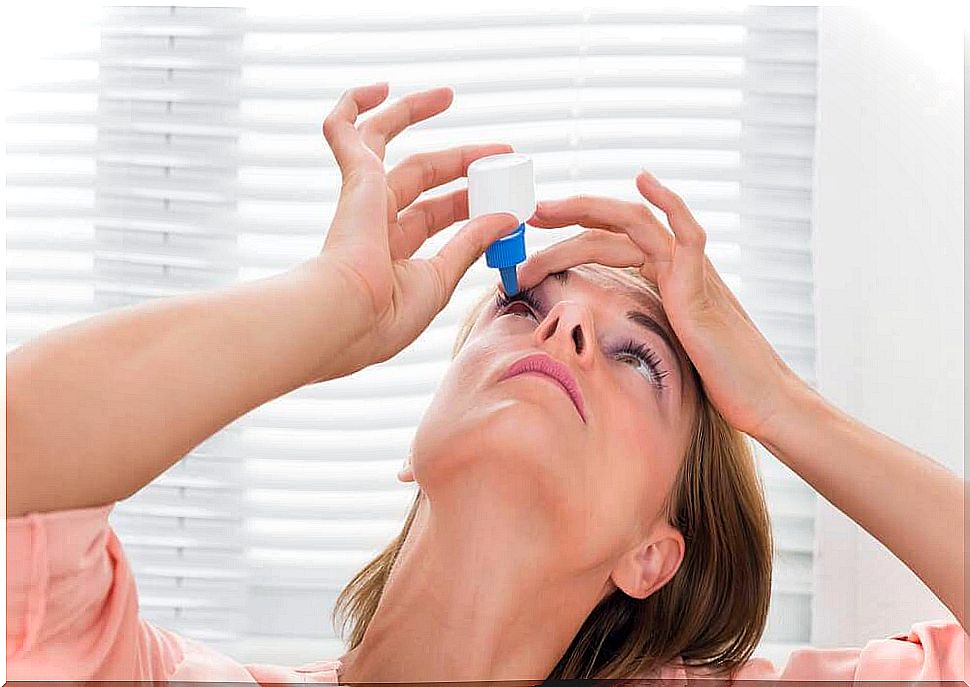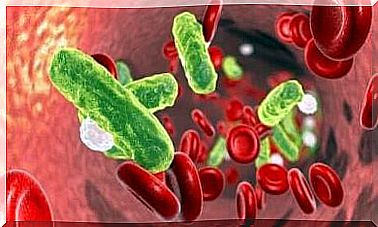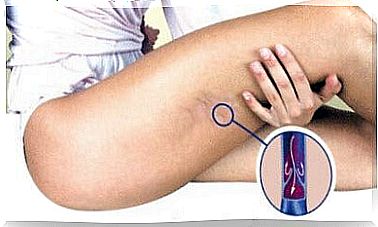Allergic Conjunctivitis: Symptoms, Causes And Treatment

Allergic conjunctivitis is a chronic inflammation of the conjunctiva caused by an allergy to substances in the environment. It is very common to be accompanied by rhinitis or inflammation of the lining of the nose. In this case, it is called allergic rhinoconjunctivitis.
The conjunctiva is the membrane that covers the eyelids and the white part of the eye. In this area, there are a large number of immune system cells. Faced with environmental stimuli (such as pollen, smoke, mites, etc.), these cells release chemical substances. This causes the conjunctiva to become inflamed, briefly or for a long time.
About 25% of people are believed to have some degree of allergic conjunctivitis. Sometimes the disease occurs by itself, and in other cases it is accompanied by other ailments. One is rhinitis, as noted above, but it can also be asthmatic bronchitis or eczema.
Types of Allergic Conjunctivitis

There are several types of allergic conjunctivitis, depending on the causative agent and the course of the disease. The most typical form is caused by pollen. It usually appears in spring or summer and disappears during other seasons. It’s called seasonal allergic conjunctivitis or seasonal allergic rhinoconjunctivitis.
There is a type of seasonal conjunctivitis that has the same symptoms as seasonal allergic conjunctivitis. However, detailed examinations do not detect any allergies. The cause of this problem is unknown and is called vernal conjunctivitis.
Meanwhile, perennial conjunctivitis is present throughout the year. In this case, the allergens are usually dust, smoke, mites, animal hair and feathers. There is another more complex form of conjunctivitis called keratoconjunctivitis.
Keratitis occurs when the cornea becomes inflamed. Allergic conjunctivitis does not normally generate this effect, except in the case of spring keratoconjunctivitis, a rare modality. There is also atopic keratoconjunctivitis, which is a complication of atopic dermatitis.
Symptoms
Allergic conjunctivitis usually affects both eyes. The characteristic symptoms of the disease are as follows:
- Itchy eyes.
- Reddish eyes.
- Lachrymation.
- Eyelid edema, eyelid inflammation due to fluid accumulation.
- Eye discharge. It can be watery or with a mucous texture.
- Light intolerance.
- Foreign body sensation in the eyes.
To make the diagnosis, the patient’s symptoms are taken into account and an ophthalmologic review performed. This consists of an eye exam.
Complementary tests such as conjunctival smear, prick test, conjunctival challenge test, etc., are needed to discover the causative agent .
Causes of allergic conjunctivitis
Allergic conjunctivitis is an overreaction of the immune system against a factor in the environment. When the eyes are exposed to the stimulus that causes the allergy, the immune system picks it up and triggers a series of reactions, which together form an inflammatory response.
Some cells, such as eosinophils, mast cells and others, are activated. In doing so, they release substances such as histamine and IgE. They generate the typical symptoms of conjunctivitis, such as itching, redness, inflammation, etc.
There are additional agents, such as viruses, nervousness, spicy foods, light and others, that lead to the exacerbation of symptoms. These elements are harmless if the conjunctiva is not previously inflamed.
Treatment

When the person already has allergic conjunctivitis, the important thing is to take the necessary measures to reduce exposure to the triggering factor for allergies and follow some basic precautions to alleviate the symptoms. It is advisable to clean the eyes with saline solution or soap with a neutral pH.
It is also recommended not to rub your eyes and apply cold compresses to reduce itching. Your doctor may recommend the use of certain medications, such as antihistamines, nonsteroidal anti-inflammatory drugs, topical corticosteroids, or eye drops.
All of these measures help to deal with the symptoms. However, the best treatment for allergic conjunctivitis is prevention. The first thing to do is to identify the allergen using the corresponding medical tests.
Either way, it’s best to keep the house clean, use synthetic bedding, and avoid pets, rugs, and stuffed animals. During seizures, it is not recommended to wear contact lenses.









